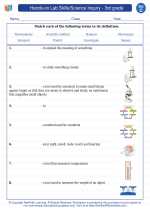Bone
Bones are the rigid organs that make up the skeletal system of vertebrates. They provide support and protection for the body, as well as playing a crucial role in movement, blood cell production, and mineral storage.
Structure of Bone
Bone tissue is composed of two main types of bone: compact bone and spongy bone. Compact bone is dense and forms the outer layer of bones, while spongy bone is found inside the compact bone and has a porous, honeycomb-like structure.
Types of Bones
There are four main types of bones in the human body:
- Long bones: These bones are longer than they are wide and are found in the arms, legs, fingers, and toes.
- Short bones: These bones are roughly cube-shaped and are found in the wrists and ankles.
- Flat bones: These bones are thin and flat and include the ribs, sternum, and skull bones.
- Irregular bones: These bones have complex shapes and include the vertebrae and some facial bones.
Bone Composition
Bone is made up of several components, including:
- Calcium: A mineral that provides strength and hardness to the bone.
- Collagen: A protein that provides flexibility and resilience to the bone.
- Bone marrow: A soft, fatty substance found in the cavities of bones that is involved in the production of blood cells.
Functions of Bone
Bones have several important functions in the body, including:
- Support: Bones provide a framework for the body and support the muscles and other tissues.
- Protection: Bones protect vital organs such as the brain, heart, and lungs.
- Movement: Bones, along with muscles, enable movement and locomotion.
- Blood cell production: Bone marrow is involved in the production of red and white blood cells and platelets.
- Mineral storage: Bones store minerals such as calcium and phosphorus, which are important for the body's metabolic functions.
Study Guide
Here are some key points to remember about bones:
- What are the two main types of bone tissue?
- List the four main types of bones in the human body.
- What are the main components of bone?
- What are the functions of bones in the body?
Understanding the structure and function of bones is important for maintaining a healthy skeletal system and overall well-being.
.◂Science Worksheets and Study Guides Third Grade. Hands-on Lab Skills/Science Inquiry - 3rd grade

 Worksheet/Answer key
Worksheet/Answer key
 Worksheet/Answer key
Worksheet/Answer key
 Worksheet/Answer key
Worksheet/Answer key
 Worksheet/Answer key
Worksheet/Answer key
 Vocabulary/Answer key
Vocabulary/Answer key
 Vocabulary/Answer key
Vocabulary/Answer key
